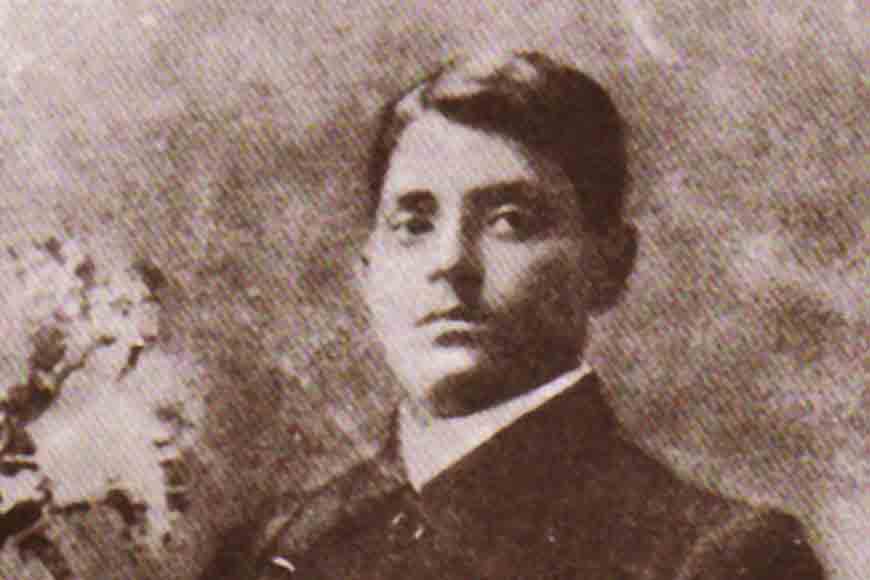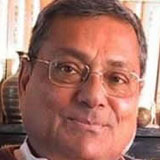Bagha Jatin, the freedom fighter who sought to capture Fort William

About the writer: In his childhood, Prithwindra Mukherjee (born 1936, Kolkata) listened to tales of his grandfather Jatindranath Mukherjee or Bagha Jatin from ‘Bordi’, the latter’s elder sister Vinodebala Devi. In 1955, inspired by written notes left by Bordi, Mukherjee began investigating the life and times of Bagha Jatin. It began with correspondence with those who had known Jatin, and in 1963, invited by Bhupendrakumar Datta, one of Jatin’s loyal followers and former Jugantar leader, he interviewed surviving revolutionaries connected to Jatin.
Along with other documents from the state and national archives, recommended by Prime Minister Jawaharlal Nehru, Mukherjee was the first to consult microfilms on the Indo-German collaboration (an original contribution of Jatin) as intercepted by Anglo-American Intelligence during World War I.
The following is the first of a two-part series of reminiscences by Mukherjee about his legendary grandfather.
On 10 September 2015, observing the centenary of Bagha Jatin’s martyrdom, Prime Minister Narendra Modi announced in a tweet: “His courage and sacrifice for our Motherland will always be remembered.” Bagha Jatin was a popular nickname fondly attached to the memory of Jatindranath Mukherjee (1879-1915) for his valour and vision.
Professor Tapan Raychaudhuri writes: “Bagha Jatin, alias Jatindradranath Mukherjee, is one of the legendary figures in the history of revolutionary efforts in India. The truth of this matter is unfortunately shrouded in inaccurate tales. Bagha Jatin was involved in the German Conspiracy Plot during the First World War, hoping to get arms from the Germans for a country-wide uprising, but died fighting the British Army and police before the arms could arrive. (…) The Tiger had a very sophisticated understanding of contemporary political reality. He (…) hoped to inspire his countrymen with the ideal of self-sacrifice in the cause of independence and by his own example fill them with courage. This accurate description of his struggle with the ruling colonial power shows the nature of the initiative and also the impact it had on the national psyche…”
On April 1o, 1906, armed with only a Darjeeling dagger, Jatin had to face a Royal Bengal tiger in a wrestling bout, to save the life of an adolescent. On the point of exhaustion, Jatin mustered his last drops of strength to plunge the dagger through the tiger’s neck.
Several associates of Jatindranath Mukherjee remembered their leader’s concern about capturing Fort William to paralyse the colonial system of protecting the interests of the Crown. Some of them, even though divided into various political factions, united their voices in 1972 to demand the renaming of Fort William as Jatindra Mukherjee Qilla or Bagha Jatin Qilla. A total of 87 members of the Rajya Sabha and Lok Sabha, representing all major political parties, signed the Petition and submitted it to then Defence Minister Jagjivan Ram. Keeping in mind the centenary of Jatindra Mukherjee’s heroic martyrdom on September 9, 1915, let the Prime Minister accept this proposal concerning the memory of one of India’s most outstanding freedom fighters.
Bagha Jatin the man
Having lost his father Umeshchandra at the age of five, Jatindra and his elder sister Vinodebala grew up under the stern and loving care of mother Sharat Shashi, a poet and devoted reader of contemporary Bengali essayists. She had taught them that to serve humanity was the same as serving God. Always a daredevil, a 14-year-old Jatin risked his life to calm a frightened horse in order to save the life of an infant in Krishnanagar, a story made famous by posterity.
Personally encouraged by Swami Vivekananda, Jatin extended his social service to the cause of ridding India of her foreign rulers. Seeking to improve his self-defense skills at the gymnasium run by the Goho (Guha) family, the dauntless Jatin was fully abreast of the editorial dialogue between Bipinchandra Pal and Rabindranath Tagore on the tragic problem of gratuitous insults to the “natives” from colonial rulers. Tagore’s immediate solution was the tonic of the “clenched fist”.
Very soon to become famous as a “local Sandow (the renowned Prussian bodybuilder)”, owing to his frequent interventions against arrogant British military officers posted in Fort William, in the winter of 1905, Jatin took advantage of the visit of the Prince of Wales to distract the citizens raging against the Partition of Bengal. He invented his own means to point out to the future Emperor that it was the dregs of British society who had been appointed to govern India. On his return from India, the Prince consequently had a long conversation with Secretary of State John Morley on May 1o, 1906, on the ungracious bearing of Europeans toward Indians.
On April 1o, 1906, armed with only a Darjeeling dagger, Jatin had to face a Royal Bengal tiger in a wrestling bout, to save the life of an adolescent. On the point of exhaustion, Jatin mustered his last drops of strength to plunge the dagger through the tiger’s neck. Taking upon himself the responsibility of curing the fatally wounded patient, leading surgeon Suresh Sarbadhikari published a tribute to Jatin, ‘The Nimrod of Bengal’, and it won him the fond nickname of Bagha Jatin, for his tiger-like valour.
Also read : Masterda- Remembering him on his birthday
Swami Vivekananda’s brother, Bhupendranath Datta, mentions having spoken to Jatin in December 1906 - while he was still convalescing after the bout with the tiger - during a closed-door meeting of Jugantar leaders, presided over by Sri Aurobindo. Jatin admitted that the much needed funds for furthering the freedom movement could only be secured by dacoity; but that the victims would be informed that the money was to be treated as a loan, to be repaid after Independence.
Still limping on legs mauled by the tiger, Jatin enacted the crowning episode of this pageant in April 1908, at Siliguri railway station. Single-handed, he felled four cheeky English military officers. The Indian press published such a fulsome and celebratory account of this event that the officers’ legal advisor withdrew the case against Jatin. Asked by the Magistrate to behave properly in future, Jatin regretted that he could not promise to refrain from similar actions as part of his duty to vindicate the rights of his countrymen.
Riposte to Repression
At this juncture, history took on a faster tempo. Having frequented the secret society called Anushilan Samiti since its inception in 1903, Jatin joined Sri Aurobindo as the latter’s right-hand man to prepare a powerful underground revolutionary movement, recorded as Jugantar by the colonial police. Their final objective was to declare an 1857-type of war of independence throughout India, with the participation of officers and soldiers from various cantonments.
Several associates of Jatindranath Mukherjee remembered their leader’s concern about capturing Fort William to paralyse the colonial system of protecting the interests of the Crown. Some of them, even though divided into various political factions, united their voices in 1972 to demand the renaming of Fort William as Jatindra Mukherjee Qilla or Bagha Jatin Qilla. A total of 87 members of the Rajya Sabha and Lok Sabha, representing all major political parties, signed the Petition and submitted it to then Defence Minister Jagjivan Ram.
Contrary to the highly centralized organisation at Maniktala Garden under Barin Ghose as sole leader, Jatin the strategist had been creating decentralized and loose confederated regional centres under a local leader, who ignored the responsibility given to the leader of his neighbouring unit. This pattern ensured that even if a unit or two was paralysed, the general scheme would continue to function undisturbed. Sensing that Barin’s push towards an untimely showdown was likely to drive him to an abrupt end, Sri Aurobindo warned Jatin against visiting Maniktala Garden.
On April 30, 1908, Khudiram Bose and Prafulla Chaki - mandated by Barin - assassinated two innocent English women at Muzaffarpur, mistaking their coach to be that of an English magistrate black-listed by the revolutionaries. A total of 33 Jugantar activists were arrested, and the Alipore Conspiracy Case began, with Sri Aurobindo accused as the mastermind. Though Jatin’s name was pronounced as “one of the principal leaders of the movement”, his strategy of a loose federation helped him escape and rally the remaining stunned, absconding militants.
To be continued...










